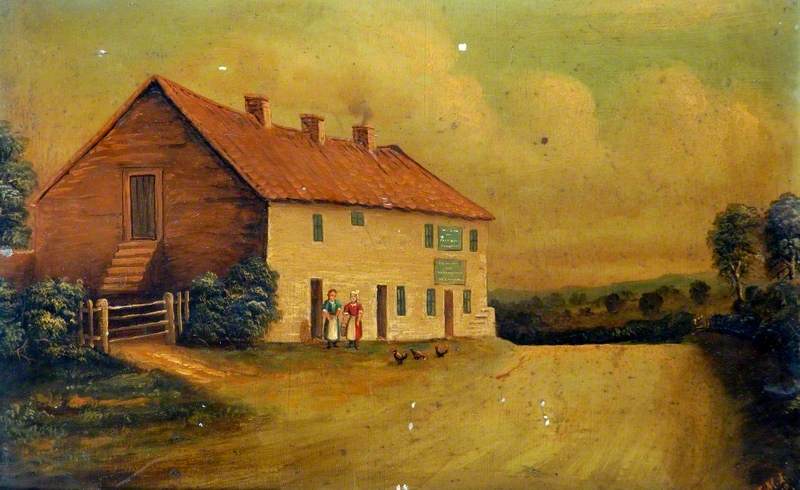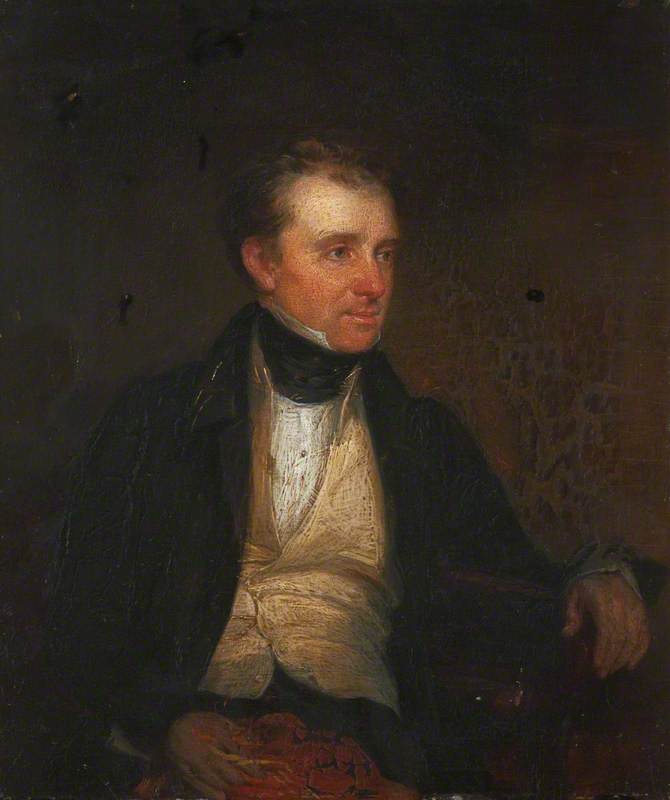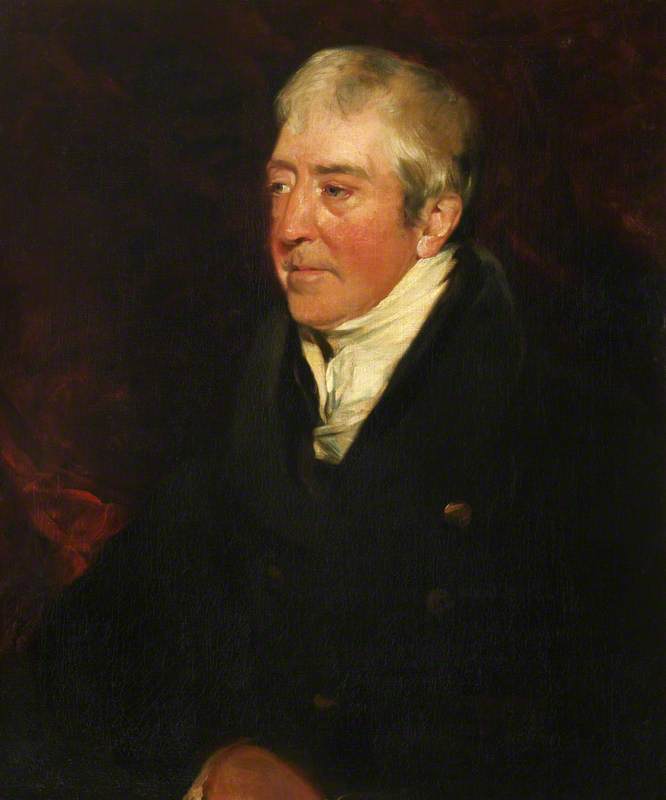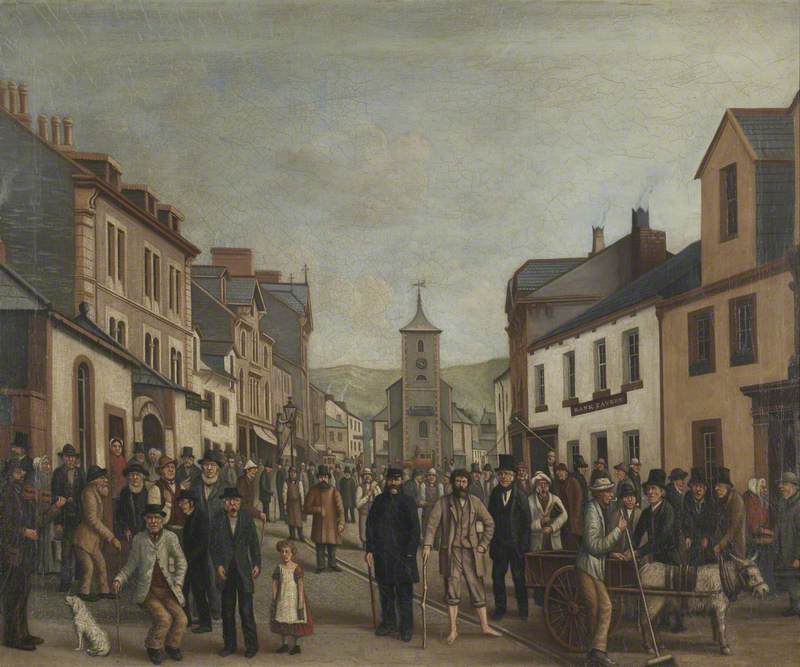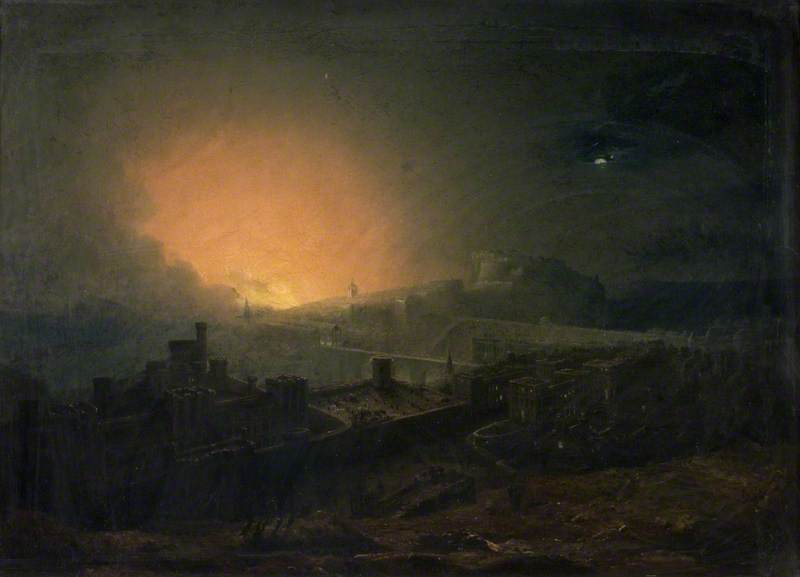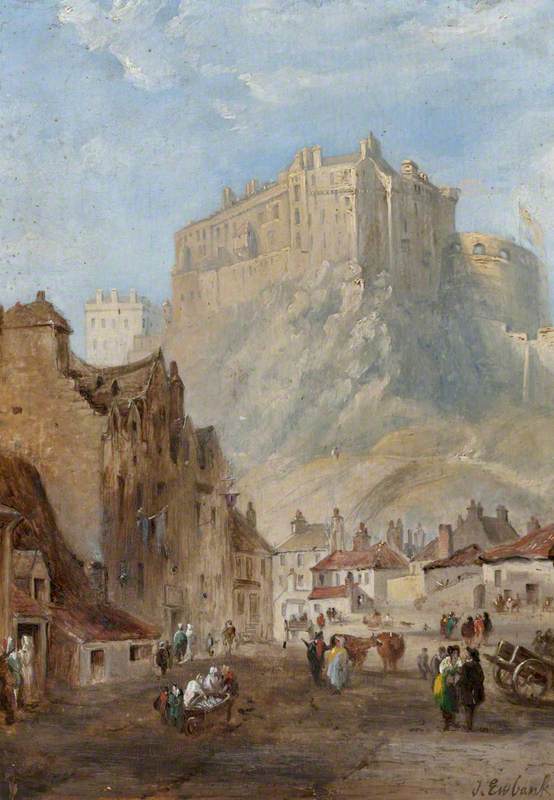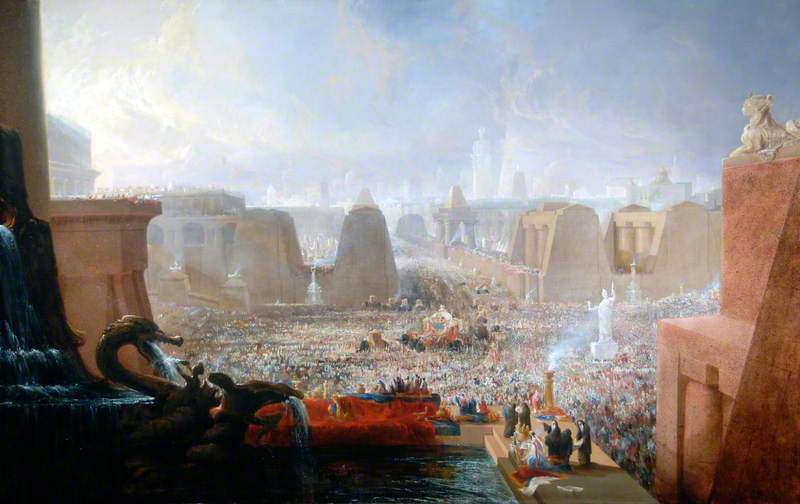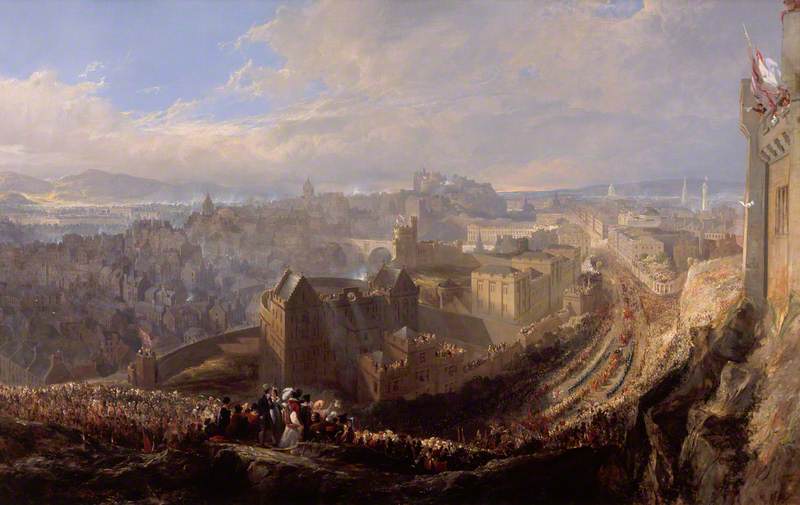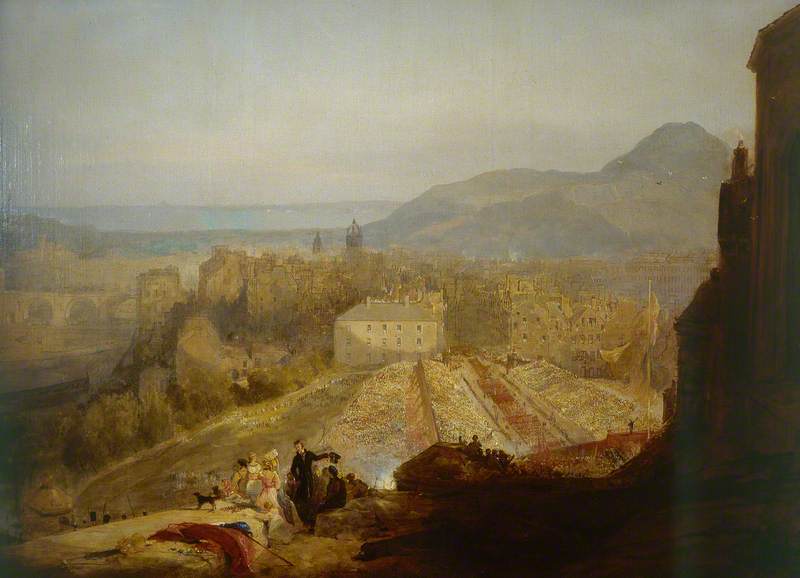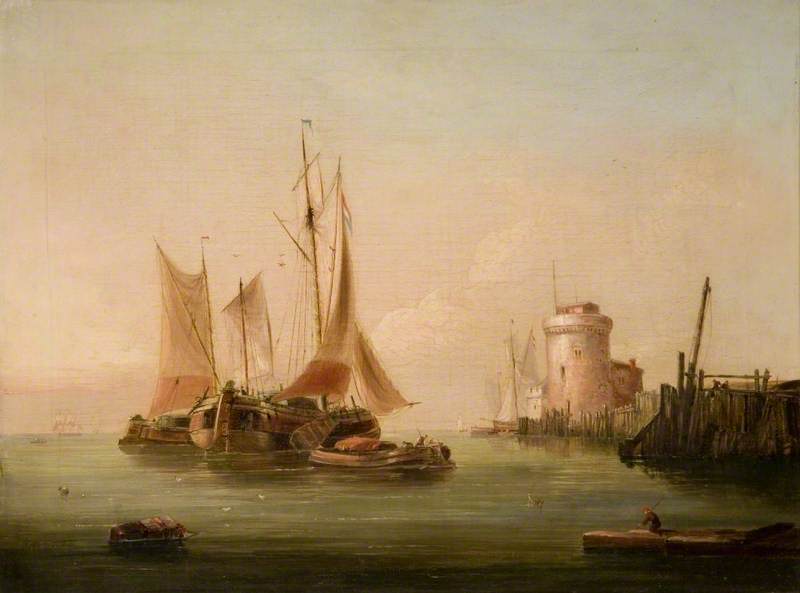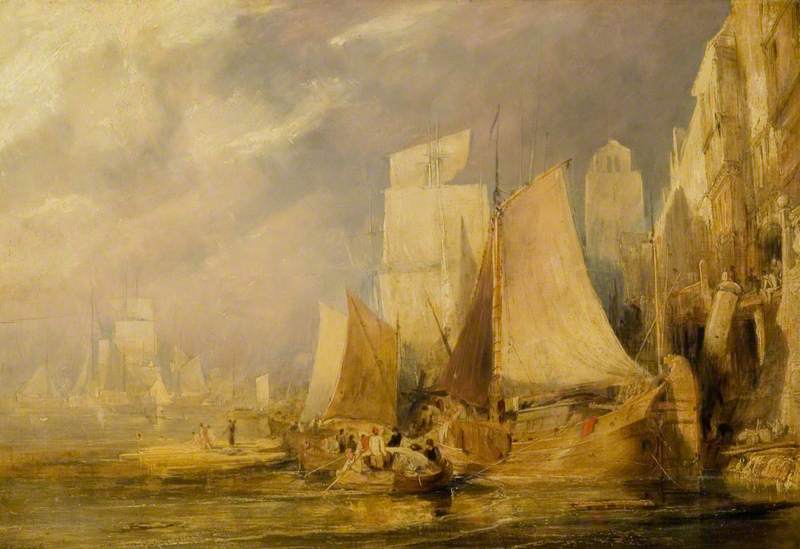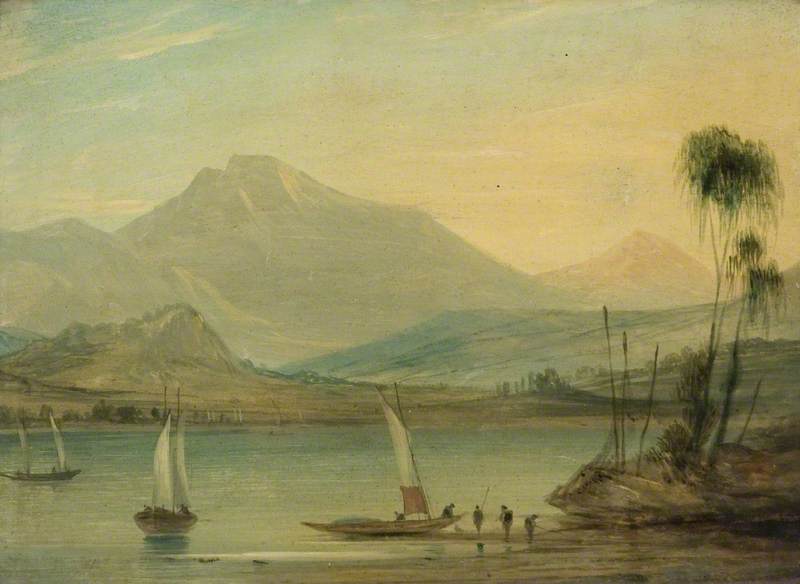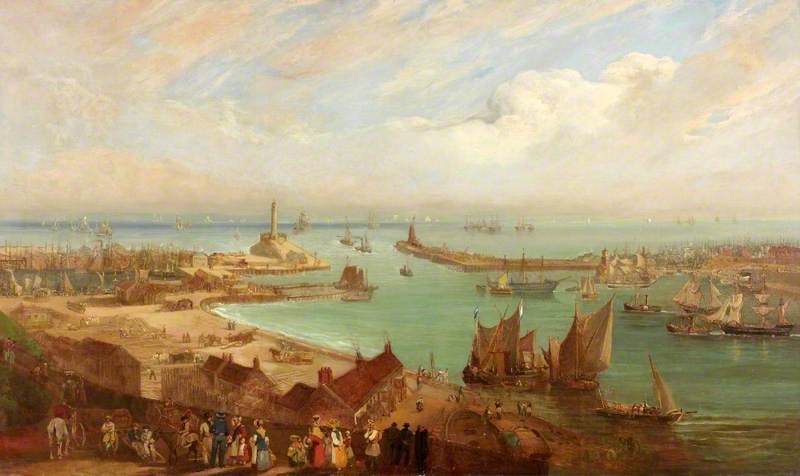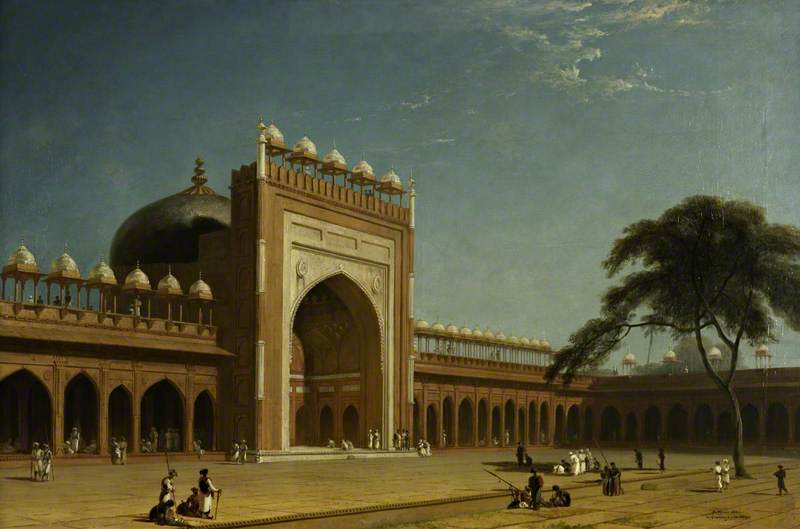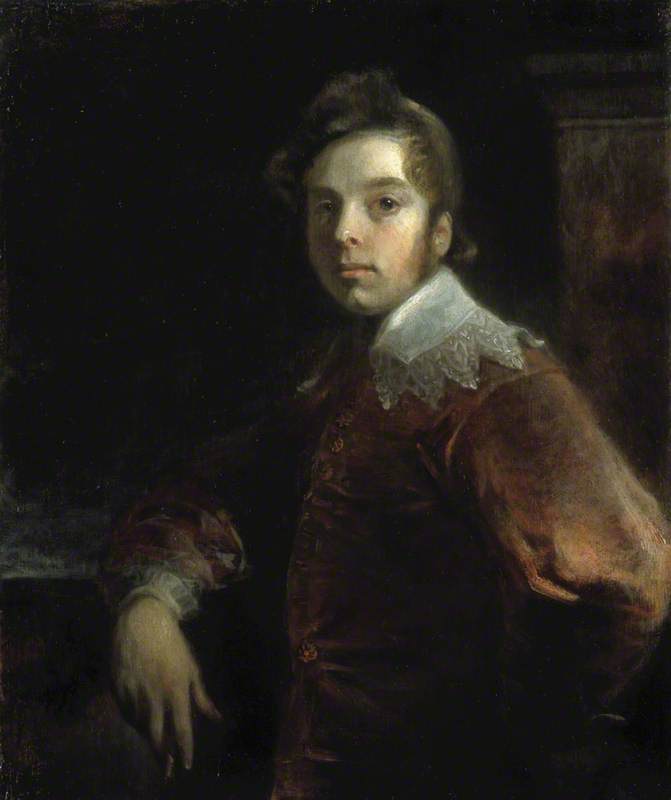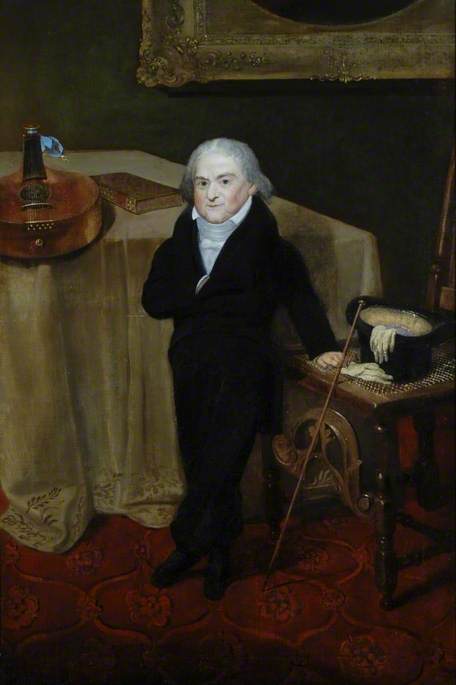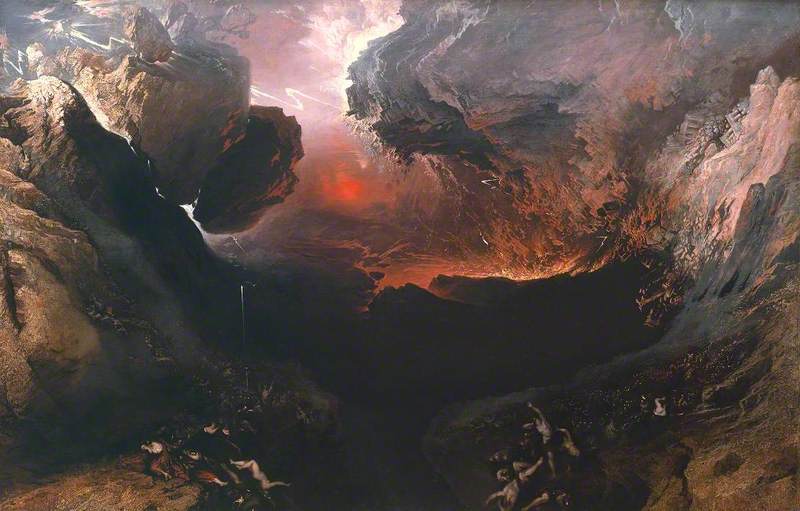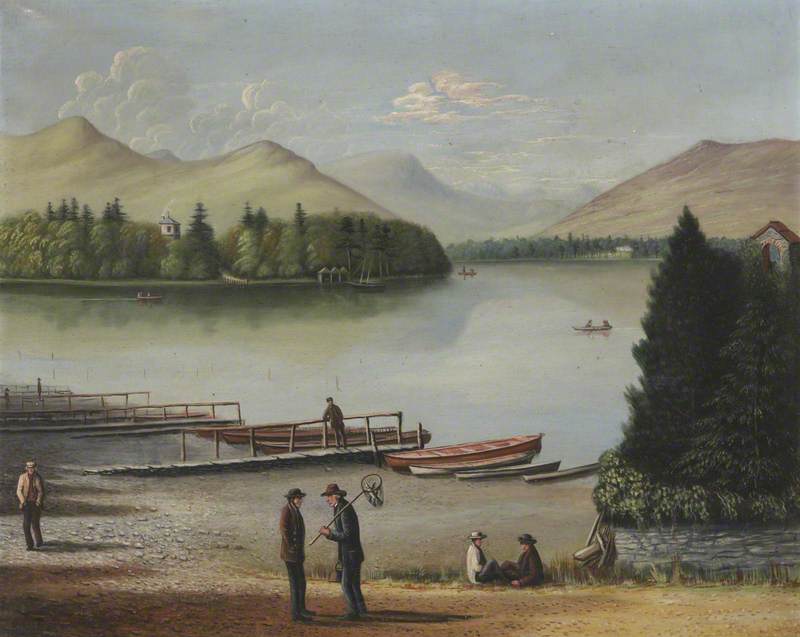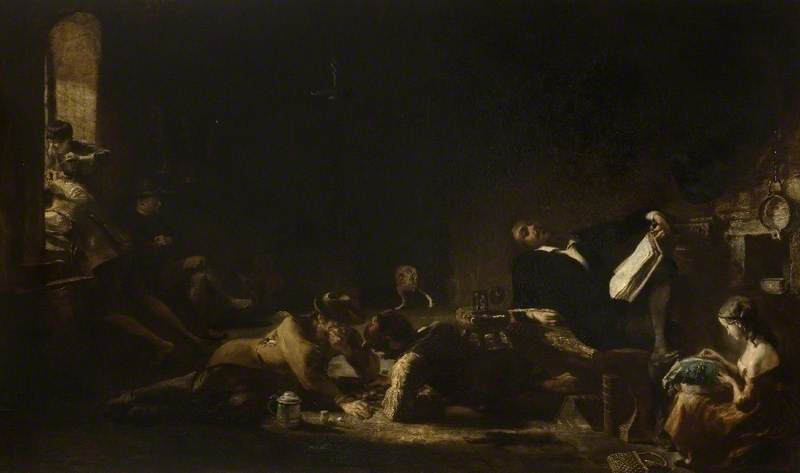John Wilson Ewbank RSA (1799-1847) would have empathised with the double-sided character of Edinburgh’s famous Deacon Brodie; immortalised by Robert Louis Stevenson in his novel ‘Dr Jekyll and Mr Hyde.’ By day Brodie presented outwardly an impression of respectability, yet by night he turned to nothing more than a petty thief and thug. So too Ewbank enjoyed considerable recognition and success at the outset of a promising career, yet an over-fondness of the ‘demon drink’ brought disgrace, and ultimately destroyed his career, himself, and his family.
-
“The annals of genius are too often the records of misfortune. The book of life teems with proofs......but in no instance have we seen a more lamentable prostration of genius at the shrine of sensuality than in that of the talented but unfortunate subject of the following remarks.” lamented the ‘Newcastle Journal’ in its obituary of Ewbank on 18 December 1847.
Ewbank has several claims to fame. He was the first person elected to the [Royal] Scottish Academy in 1826, becoming the first painter member, the first English-born member, and the first non-Scottish member in the process. When the Academy’s first Annual Exhibition was held in 1827, the very first picture sold, was one by Ewbank.
-
Early Years
'Baydale Beck Inn', Darlington, County Durham 1912Ewbank was born in Darlington on 4 May 1799, and raised as a Roman Catholic. About the age of 5 Ewbank moved with his family to Gateshead on Tyneside, where his father Michael ran the Wheat Sheaf Inn until his death in 1830 aged 58.
A. M. I. (active 1912)
Oil on board
H 23.2 x W 35.5 cm
Darlington Borough Art Collection
-
View of Newcastle upon Tyne, Taken from a Windmill to the East of St Ann's c.1802–1803
As a child Ewbank was sent to Ushaw Catholic Seminary to train for the priesthood. Newly opened in 1808, Ushaw is an imposing complex. Ewbank was not happy and absconded.
In 1813 or 1814 he secured an apprenticeship in Newcastle under Thomas Coulson, an ornamental painter, decorator, and Jappaner. Coulson employed about fifty time-served tradesmen and apprentices. These included George Nicholson, a brother of William Nicholson founding member, and the first Secretary of the Scottish Academy. Coulson was a sympathetic employer and provided drawing materials for those of his apprentices who showed signs of any artistic talent.
William Daniell (1769–1837)
Oil on canvas
H 95.3 x W 186 cm
Laing Art Gallery
-
David Ramsay Hay, Esq. (1798–1866), FRSE 1830
Coulson also had business interests in Edinburgh, where the pioneering painter & decorator and author David Ramsay Hay (1798-1866) plied his trade. Opening a branch of his own business there, Coulson introduced Ewbank to Edinburgh.
Coulson died in Edinburgh on 4 February 1834.
George Harvey (1806–1876)
Oil on panel
H 25.6 x W 22.3 cm
Royal Scottish Academy of Art & Architecture
-
Alexander Nasmyth (1758–1840), HRSA
Recognising Ewbank's artistic talents, Coulson managed to secure him lessons under Alexander Nasmyth HRSA (1758-1840) the father of Scottish landscape painting.
Ewbank’s early days in Edinburgh were spent continuing to work for Coulson as a painter and decorator, however by 1825-26 he was operating an Academy for Drawing and Painting.
His change of address in Edinburgh reflects the rise, and fall of his career. After 1834 his name disappears from the Directories altogether.
Andrew Geddes (1783–1844)
Oil on canvas
H 77.5 x W 64.8 cm
Royal Scottish Academy of Art & Architecture
-
BECOMING ESTABLISHED
Keswick Main Street 1870Ewbank was established enough by 1823 to have his name appear on trade adverts endorsing the graphite pencils made by Jacob Banks jnr. of Keswick manufacturer of the original “Cumberland” pencil, and the following year the firm of Wm Whyte & Co, 12 St Andrew’s Sq, Edinburgh advertised its stock of artist’s materials which included “ Bristol Boards for drawing as used by Syme, Ewbank and other eminent masters.”
Joseph Brown
Oil on canvas
H 9.7 x W 11.2 cm
Keswick Museum and Art Gallery
-
The Fire, Edinburgh
Over three days in November 1824 a terrible fire swept through the Old Town of Edinburgh. There was much physical damage and a number of citizens were killed.
A number of artists recorded the scene of the conflagration and its aftermath, and some of their sketches were rushed through the press to raise money for the relief of those directly affected. Ewbank’s 3 views of the fire were engraved by William Home Lizars HRSA (1788-1859) and were due to be published in the ‘Edinburgh Evening Courant' within a fortnight of the calamity.Perhaps the authorship of this picture can therefore now be tentatively attributed to Ewbank, both stylistically and on circumstantial grounds?
John Martin (1789–1854) (style of)
Oil on canvas
H 67.2 x W 92.4 cm
Shipley Art Gallery
-
Edinburgh
By this time Ewbank and Lizars already knew each other. In the early summer of 1823 Lizars’ father Daniel, himself a successful engraver, commenced business as a Bookseller and Stationer at 61 Prince’s Street, Edinburgh. Coinciding with his business announcement, Lizars also publicised a new publishing venture; a single volume of 51 plates plus text published in 17 monthly parts.
Amongst the views included, was this one looking down the Grassmarket towards Edinburgh Castle.
John Wilson Ewbank (c.1799–1847)
Oil on panel
H 29.8 x W 21.6 cm
National Trust for Scotland, Brodie Castle
-
Alexander's Triumphal Entry into Babylon 1825
An exhibitor at the Royal Institution in Edinburgh, and at the annual Carlisle Art Exhibitions, where his work sold particularly well, Ewbank exhibited just one work at the Royal Academy in London. That was in 1826, when his ‘Alexander’s Triumphant Entry into Babylon’ was hung in the Anti-Room (cat.370). This painting was the first of Ewbank’s to come to public attention which suggested more than a passing awareness of the great dramatic landscapes by John Martin (1789-1854) who also hailed from the North-East.
John Wilson Ewbank (c.1799–1847)
Oil on canvas
H 158 x W 185 cm
The Natural History Society of Northumbria Great North Museum: Hancock
-
A Harbour Scene with Shipping 1820s–1830s
1826 also marked the founding of the Scottish Academy of Painting, Sculpture, and Architecture. Ewbank was the first artist to join the new venture. He was to remain a committed exhibitor until he suffered the ignominy of having his membership forfeited in 1838.
The Academy’s first Annual Exhibition opened in 1827. Ewbank had no fewer than 13 works (including one that was already the property of W H Lizars). The following year he had an incredible 28 works hung. The new Academy had garnered a lot of interest and support, and ‘The Scotsman’ in its review of the first exhibition on 24 April 1827 heaped praise on Ewbank; “…in landscape, [Ewbank] has, in the course of the last two years, made a gigantic stride in improvement."
John Wilson Ewbank (c.1799–1847)
Oil on millboard on panel
H 30 x W 45.2 cm
National Galleries of Scotland
-
The Entry of George IV into Edinburgh from the Calton Hill, 1822 1827
Having praised his marine subjects, the review continued;. “Mr Ewbank's other large picture is also a splendid performance; Edinburgh from the Calton Hill, with the Royal procession..........Whether it can be regarded as a correct portrait of the scene it represents or as a painting, it is equally entitled to high praise.”
John Wilson Ewbank (c.1799–1847)
Oil on canvas
H 150.5 x W 240 cm
Museums & Galleries Edinburgh – City of Edinburgh Council
-
The Military Review on the Occasion of George IV's Visit to Edinburgh
The RSA of 1828 included Ewbank’s companion piece. It was singled out for comment in the ‘Caledonian Mercury’s’ review of 11 February 1828;“Ewbank maintains his reputation. His large picture of the King's Processions to the Castle.....is a less pleasing one than its predecessor. The subject itself, the View from the Castle, is less adapted for landscape composition, and is in truth a very unmanageable one. But, in addition to this, there is a vast deal too much smoke and mist in the picture, and these are a species of tricks to which we think Ewbank, with all his talent, is a little too much addicted.”
John Wilson Ewbank (c.1799–1847)
Oil on canvas
H 134.6 x W 195.5 cm
Museums & Galleries Edinburgh – City of Edinburgh Council
-
Calm Morning off the Dutch Coast c.1841
The reviews of his works at the RSA Annual continued favourable and reveal the extent to which Ewbank had established himself; ”Ewbank has several productions in this exhibitions, which maintain his well merited reputation. No. 24. A sea-piece in a calm day, has all that warmth of colouring which distinguishes this artist’s productions. The ships are well grouped and admirably drawn; the waters and sky are transparent and natural, and the general aspect of the picture pleasing.” opined the reviewer for the ‘Edinburgh Evening Courant’ on 5 March 1829.
John Wilson Ewbank (c.1799–1847)
Oil on canvas
H 48 x W 65 cm
Sunderland Museum & Winter Gardens
-
Rotterdam
‘The Scotsman’ in its review on 25 March, noted; “Our established favourite Ewbank has several good pictures in the Exhibition—all imbued, as usual, with the poetry of his art—but; although his Passage Vessels (186) displays as much life or motion, especially in the water, as anything of his we have seen, he has not, this season surpassed himself.” It may have been around this time that he secured sales amounting to more than £2,500 in a single year, equivalent to £276,000 in purchasing power today.
John Wilson Ewbank (c.1799–1847)
Oil on board
H 40.9 x W 58.7 cm
Dundee Art Galleries and Museums Collection (Dundee City Council)
-
Loch Fyne, Herring Fishing
However subsequent reviews indicate that Ewbank had already peaked, and he was becoming careless in his once so sensitive observations of nature. By 1833 the man who just 6 years earlier had enjoyed column inches galore in the review was passed over in a single sentence; “There are several landscapes by Simson, Gibb, and Ewbank, and most of them were creditable performances.”
His last exhibiting record was in 1837.
John Wilson Ewbank (c.1799–1847)
Oil on metal
H 25.6 x W 36 cm
Shipley Art Gallery
-
A SORRY END
Sunderland Harbour from Roker c.1850–c.1855By then he was already two years into his reliance on the bottle, and as the years progressed he took to touting small landscapes, dashed off in oil paint on pieces of tin in less than an hour, and sold while still wet in local hostelries for beer money.
When he left Edinburgh and returned to Gateshead is not known; indeed the manuscript obituary notes tipped into the Academy’s set of bound Annual Reports states that he died in Edinburgh. However, after 12 years of intemperance, he finally died at Bishopwearmouth Infirmary near Sunderland on 28 November 1847, having contracted typhus. He is buried in an unmarked grave in Gill Cemetery there.
Edward Hastings (1781–1861)
Oil on canvas
H 91.5 x W 151.5 cm
Sunderland Museum & Winter Gardens
-
The Ewbank name continued to feature in the columns of the local newspapers in the North-East for the next two decades. His widow and two daughters built up a sorry stock of court appearances on charges of drunkenness and petty theft. To compound the tragedy, his daughter Margaret committed suicide in Birmingham on 31 December 1869. She had inherited some of her father’s artistic ability, but like him had resorted to raffling examples of her paintings, also on tin, to get drink money, and the method by which she took her life, was to swallow a tube of green oil paint.
